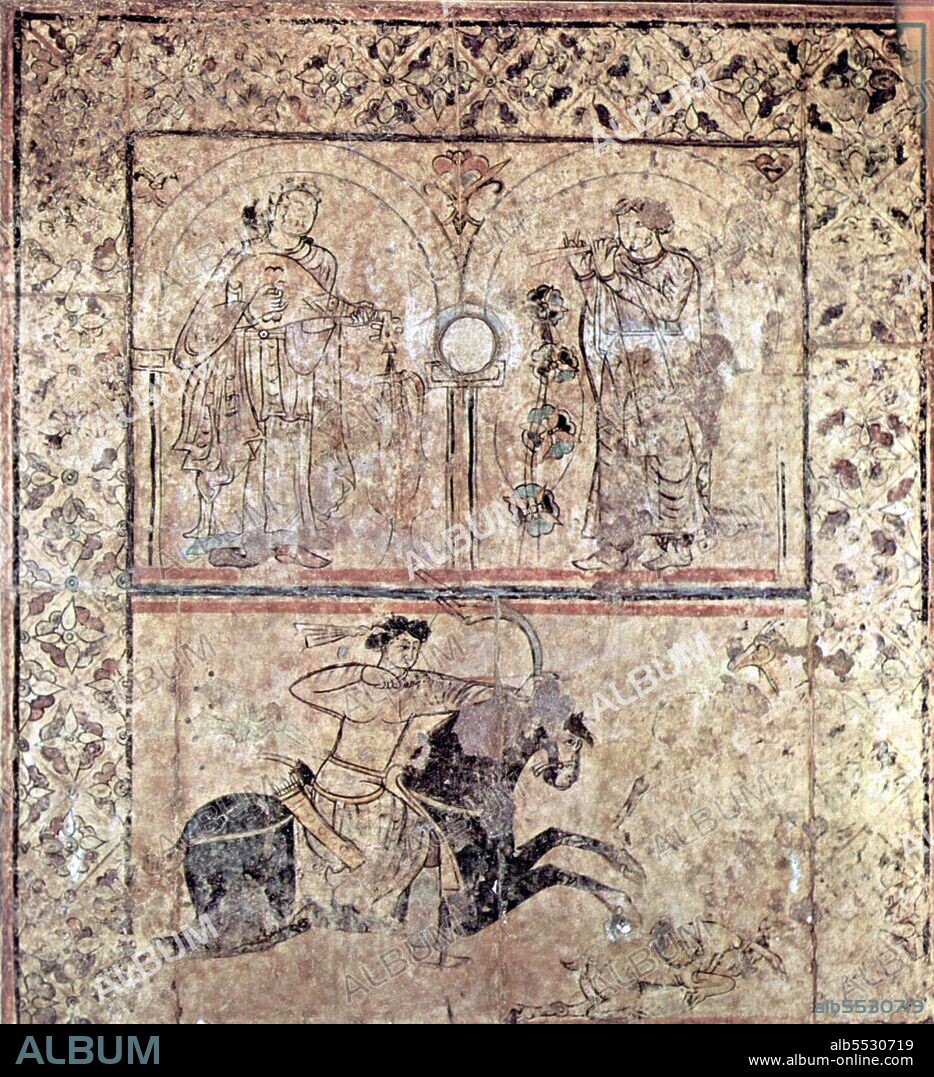alb5530719
Syria: Musicians and an archer on horseback. Fresco from Qasr al-Hayr al-Gharbî, Syria, Ummayad caliph's Palace, built in the early 7th century CE.

|
Add to another lightbox |
|
Add to another lightbox |



Buy this image.
Select the use:

Title:
Syria: Musicians and an archer on horseback. Fresco from Qasr al-Hayr al-Gharbî, Syria, Ummayad caliph's Palace, built in the early 7th century CE.
Caption:
Qasr al-Hayr al-Gharbi castle (Arabic: ??? ????? ???????), located 80 km south-west of Palmyra on the Damascus road, is a twin palace with Qasr al-Hayr al-Sharqi, built by the Umayyad caliph Hisham ibn Abd al-Malik in 727 CE. It was used as an eye of the king during the Umayyad era, to control the movement of the desert tribes and to be a barrier against them, as well as being a hunting chalet. Later it was utilized by the Ayyubids and the Mamelukes but was abandoned permanently after the Mongol invasions. The castle is quadrangular in outline with 70-meter sides. The central doorway to the castle is very attractive, and has been moved to the National Museum of Damascus to be used as the entrance. Its semi-cylindrical towers on the sides of the doorway, columns, and the geometric shapes mirrored a blend of Persian, Byzantine and Arab architecture. Not much remains from the castle. All that is visible is a reservoir to collect waters from Harbaka dam, a bath and a khan. The gateway is presently preserved as a façade in the National Museum of Damascus.
Credit:
Album / Pictures from History/Universal Images Group
Releases:
Image size:
4000 x 4385 px | 50.2 MB
Print size:
33.9 x 37.1 cm | 13.3 x 14.6 in (300 dpi)
Keywords:
ARAB • ARABE • ARABIAN • ARABIC • ARABS • ART • ARTFORM: FRESCO • ARTS • ASIA IMAGE • ASIA PICTURES • ASIA • ASIAN IMAGES • ASIAN PICTURES • ASIAN • FRESCO • FRESCOES • FRESCOS • FRESH • HISTORIA UNIVERSAL • HISTORIA • HISTORICAL IMAGES • HISTORICAL PICTURES • HISTORICAL • HISTORY IMAGES • HISTORY PICTURES • HISTORY • HISTORY. • ISLAM • ISLAMISM • LEGEND • MURAL PAINTING • MURAL • MURALS • MUSLIM WORLD • MUSLIM • MUSLIMS • PAINT • PAINTING • PAINTINGS • SYRIA • SYRIAN • UMAYYAD • WALL PAINTING • WALLPAINTING
 Pinterest
Pinterest Twitter
Twitter Facebook
Facebook Copy link
Copy link Email
Email
